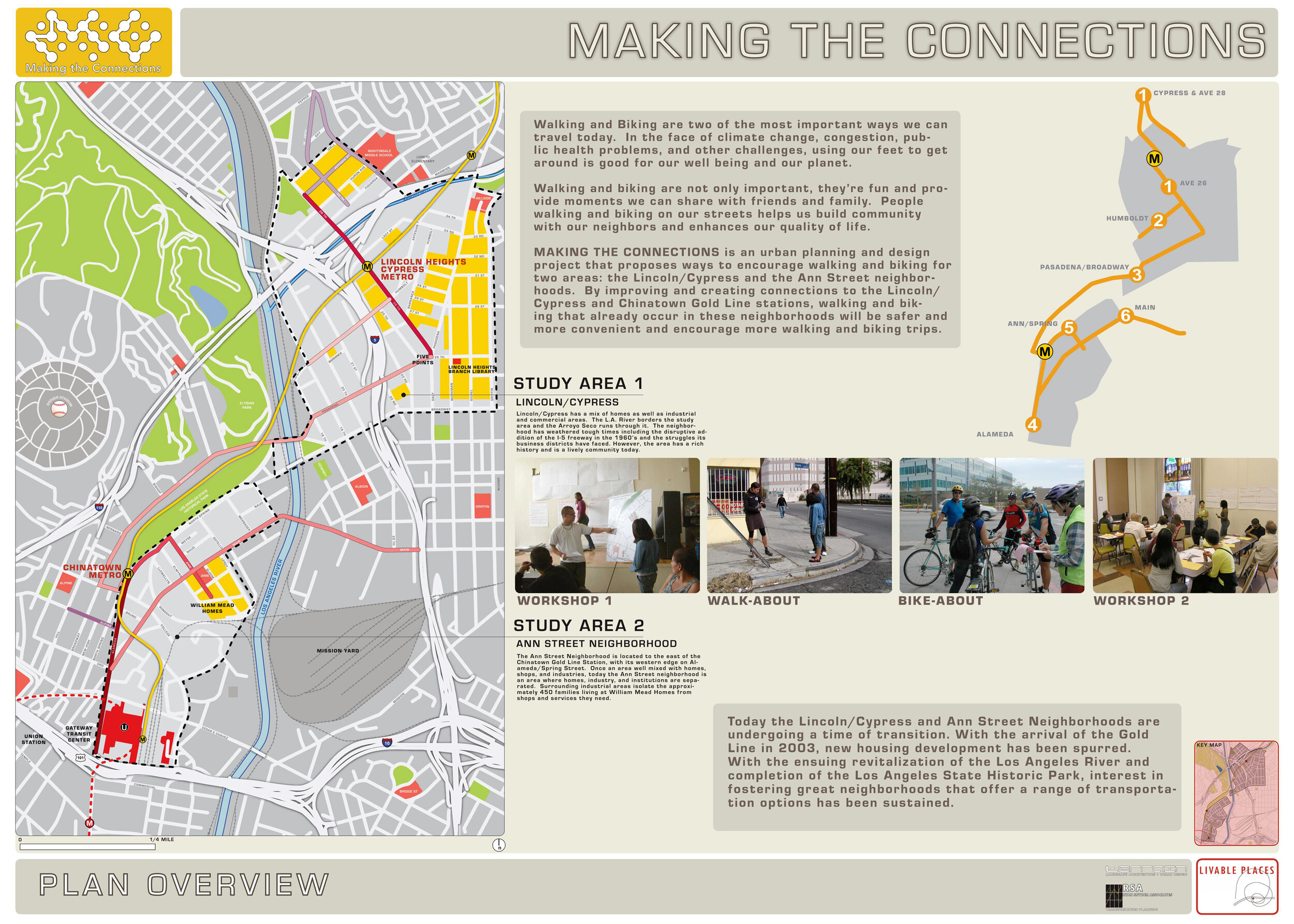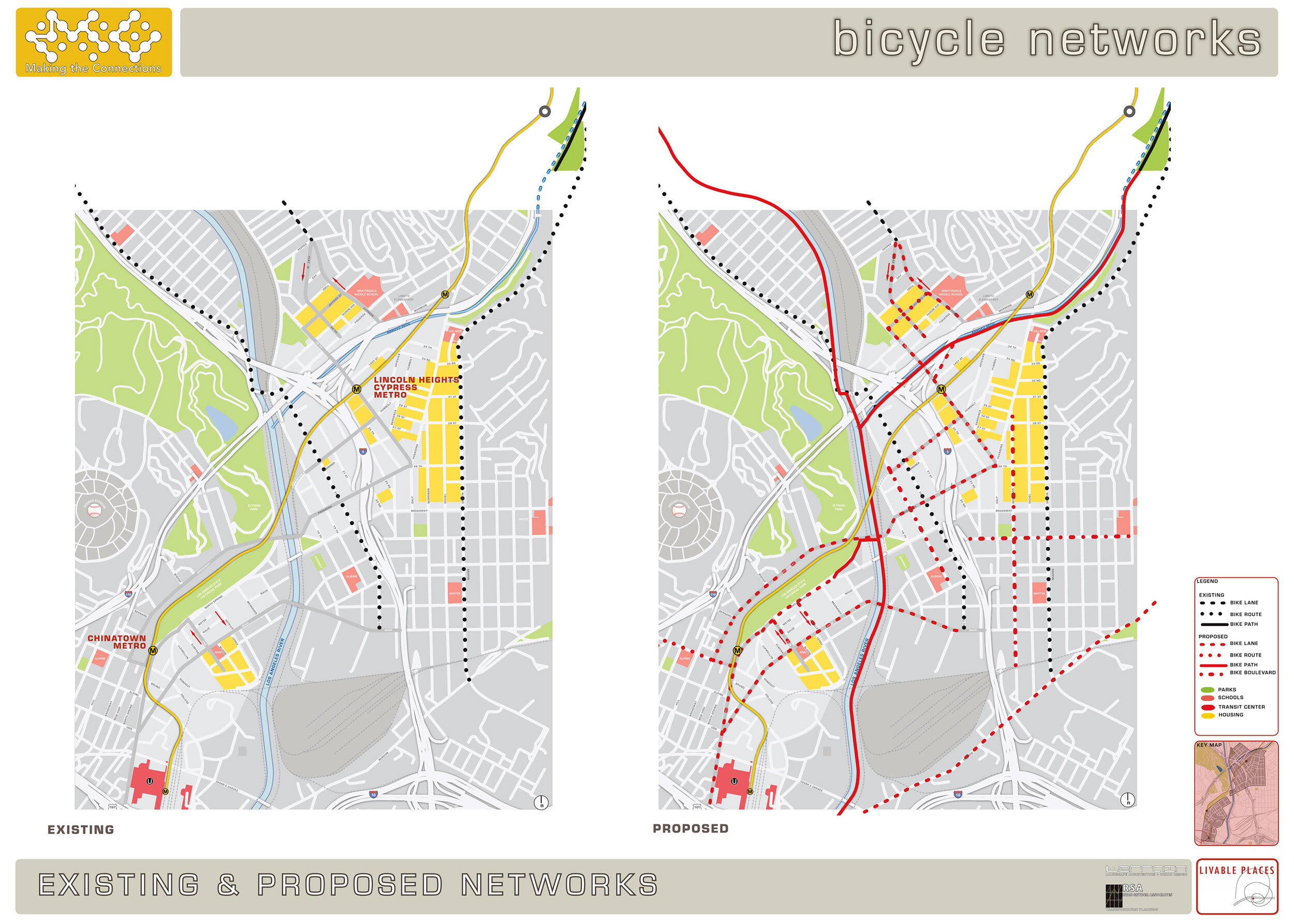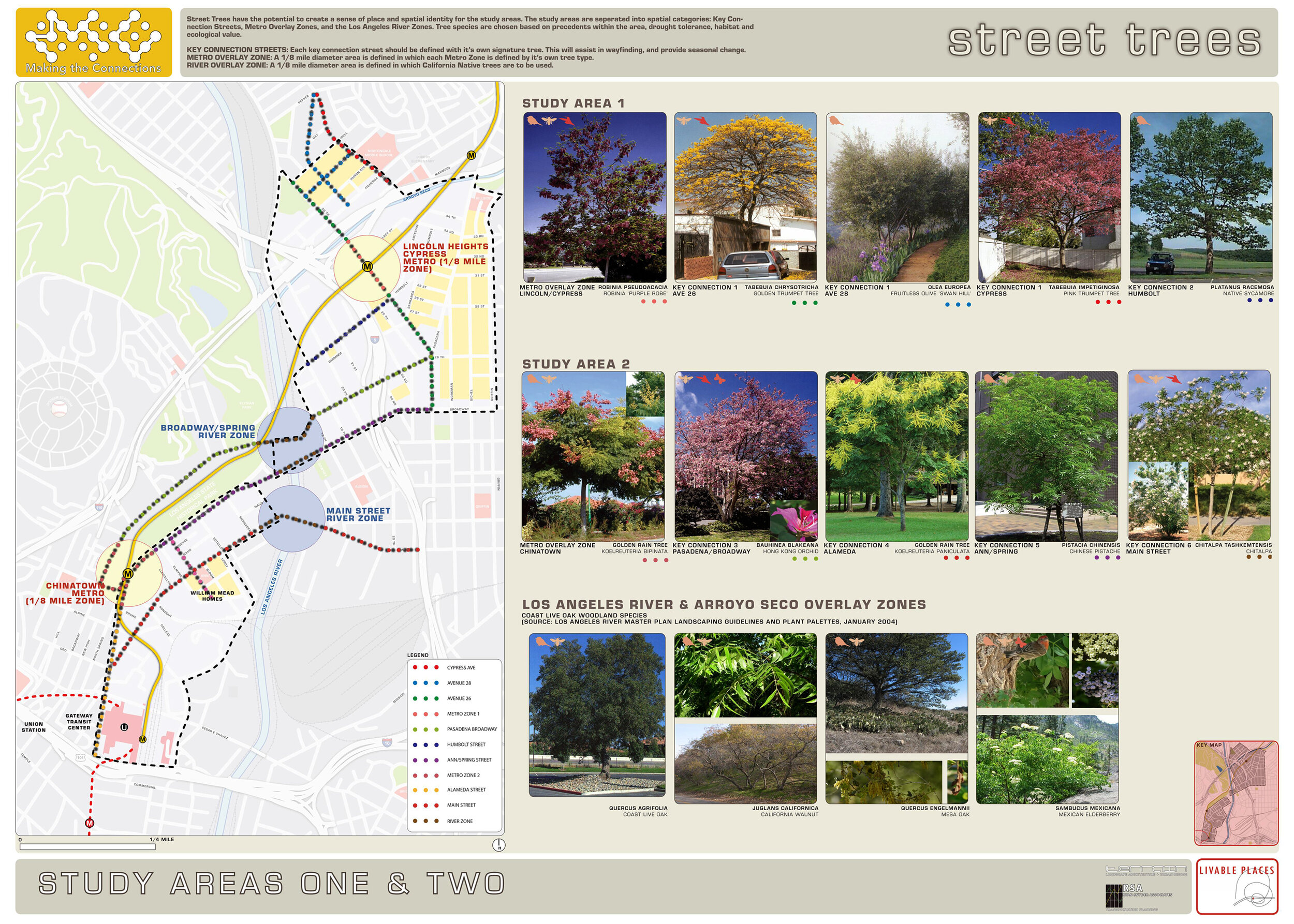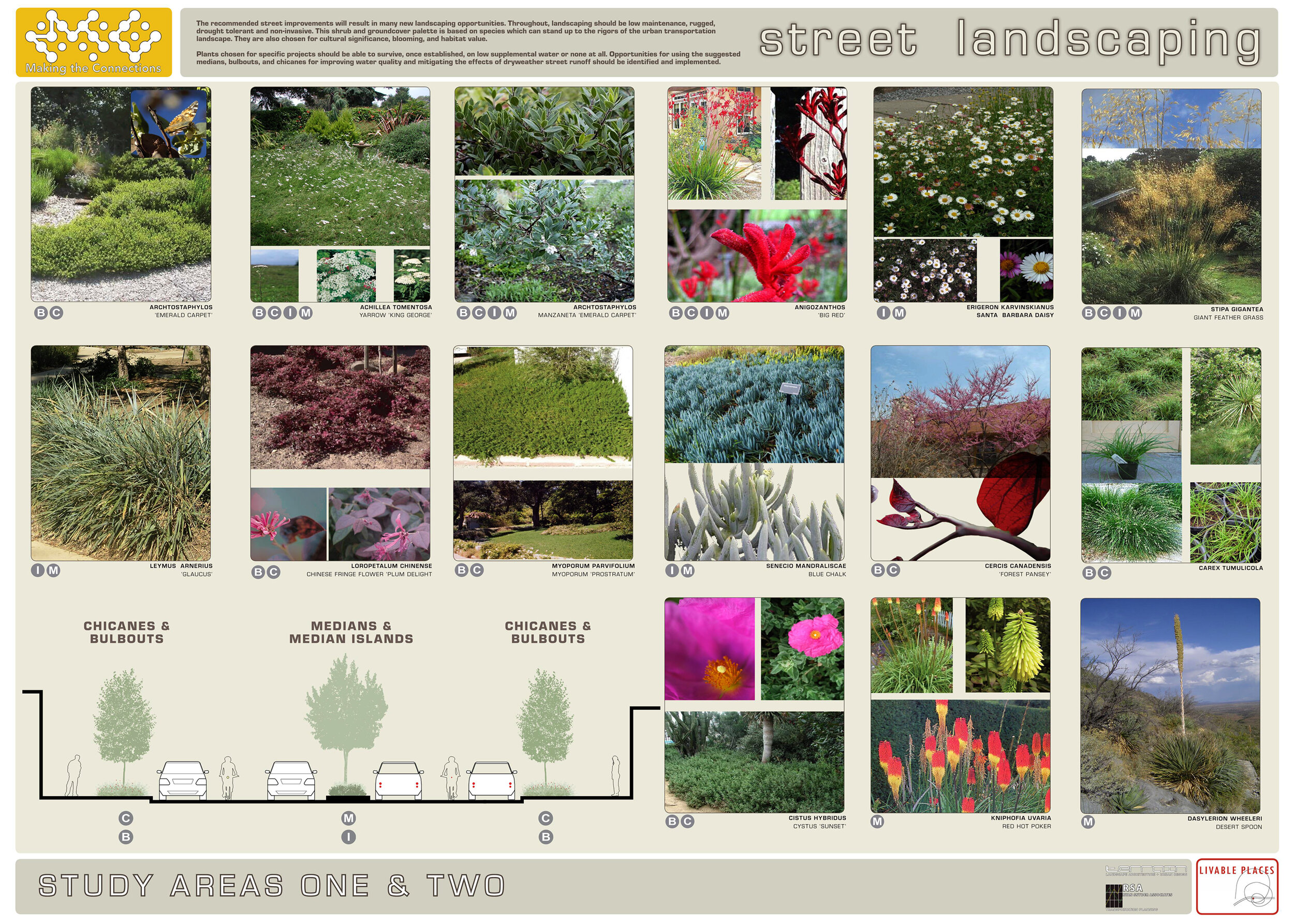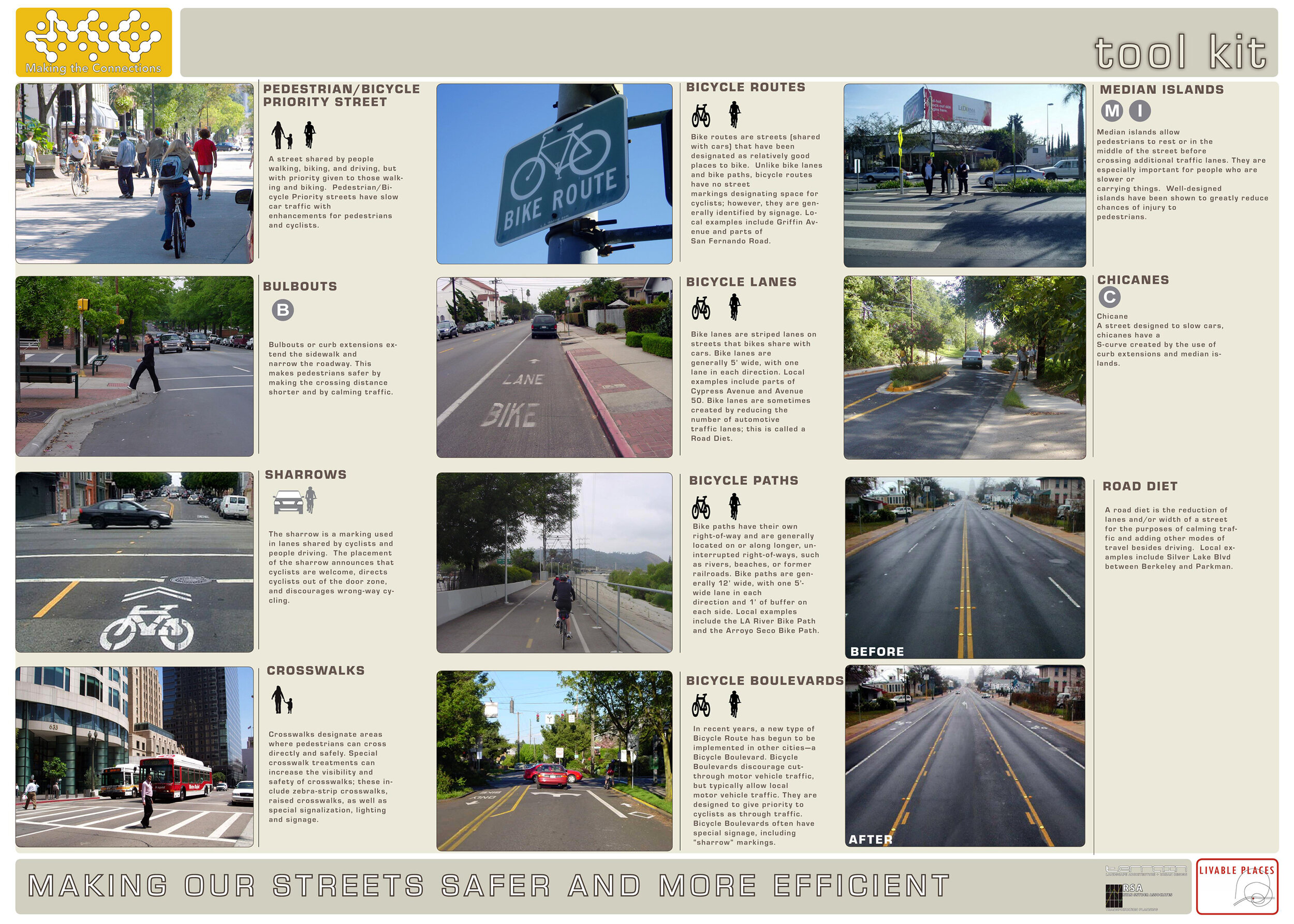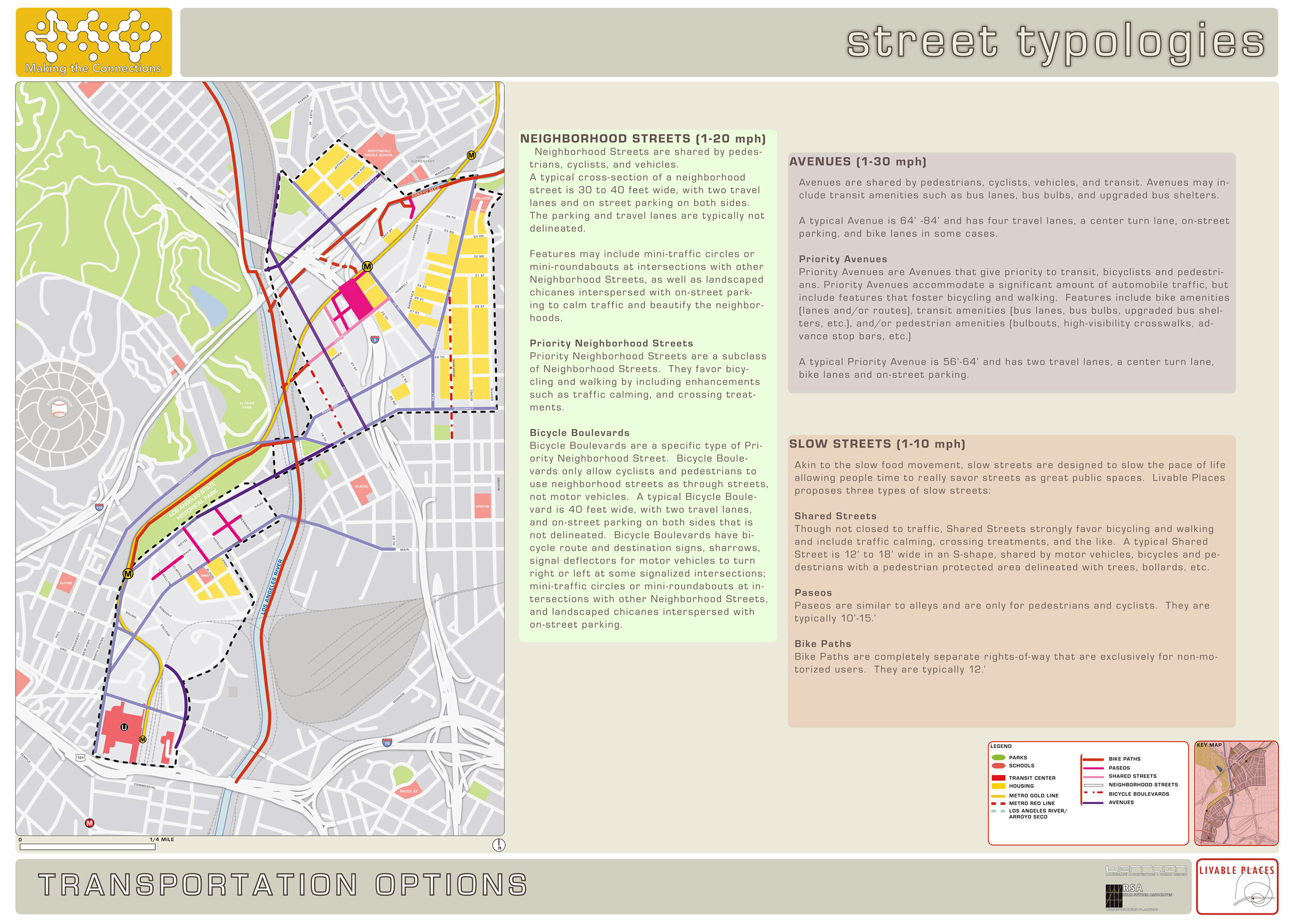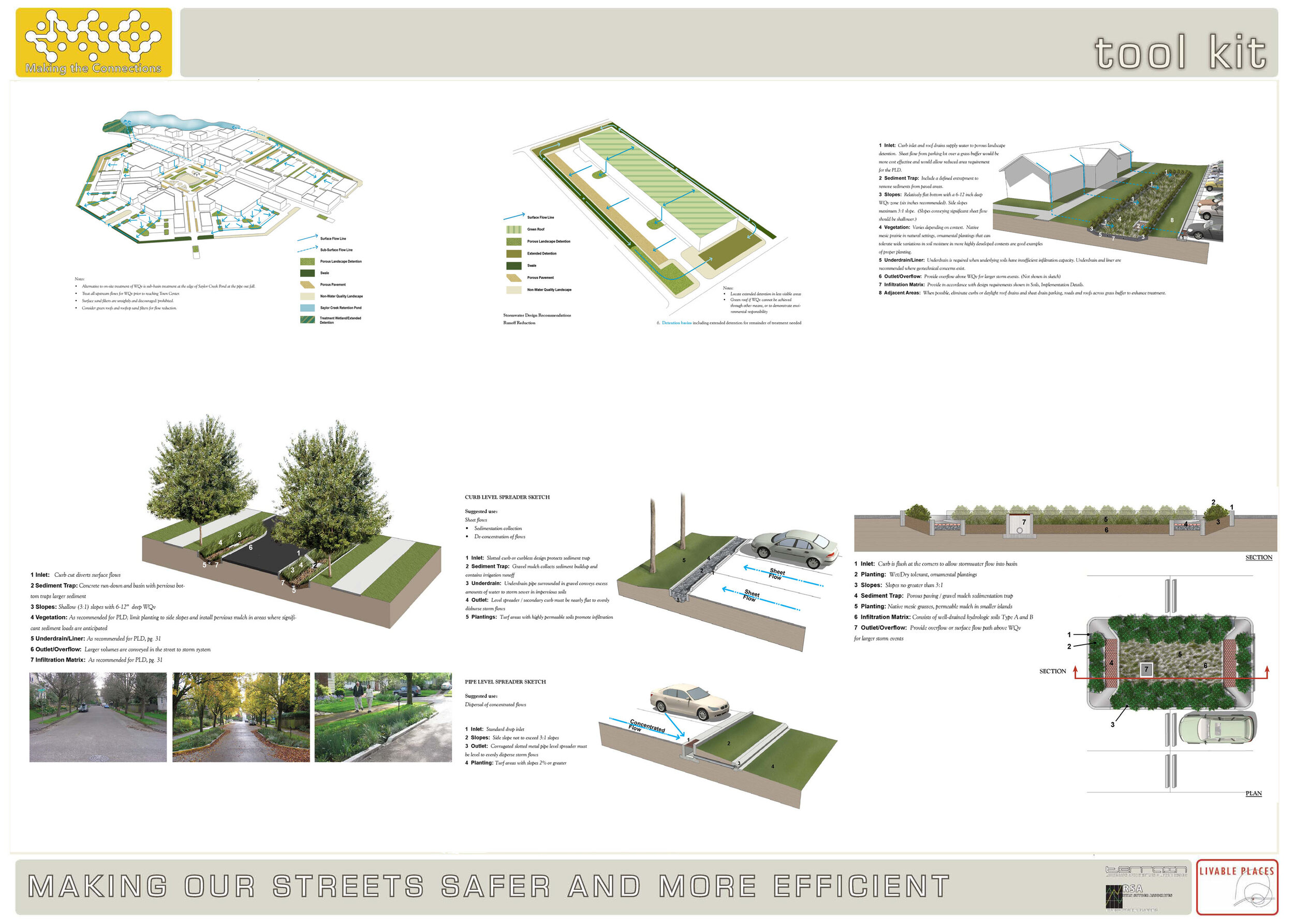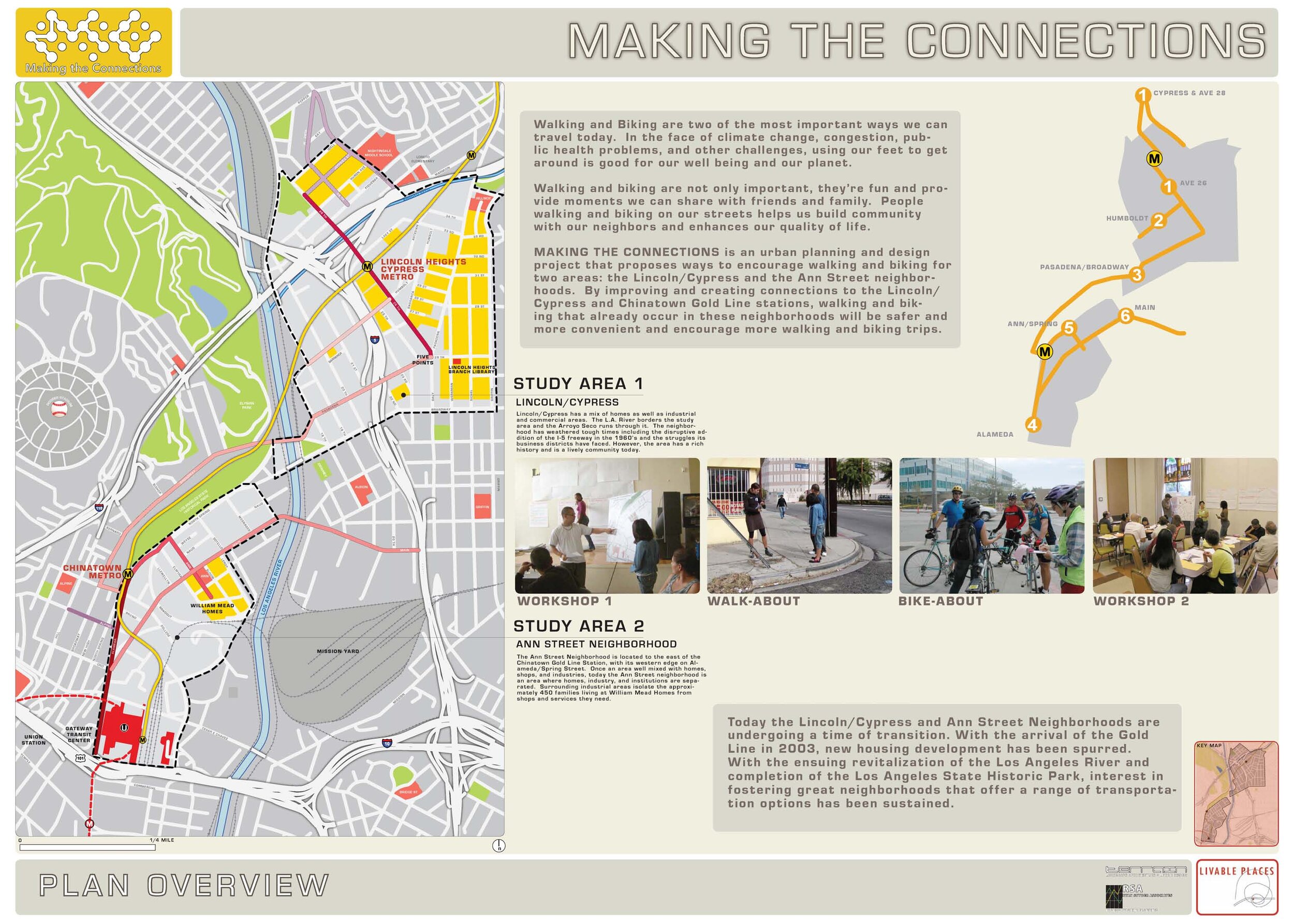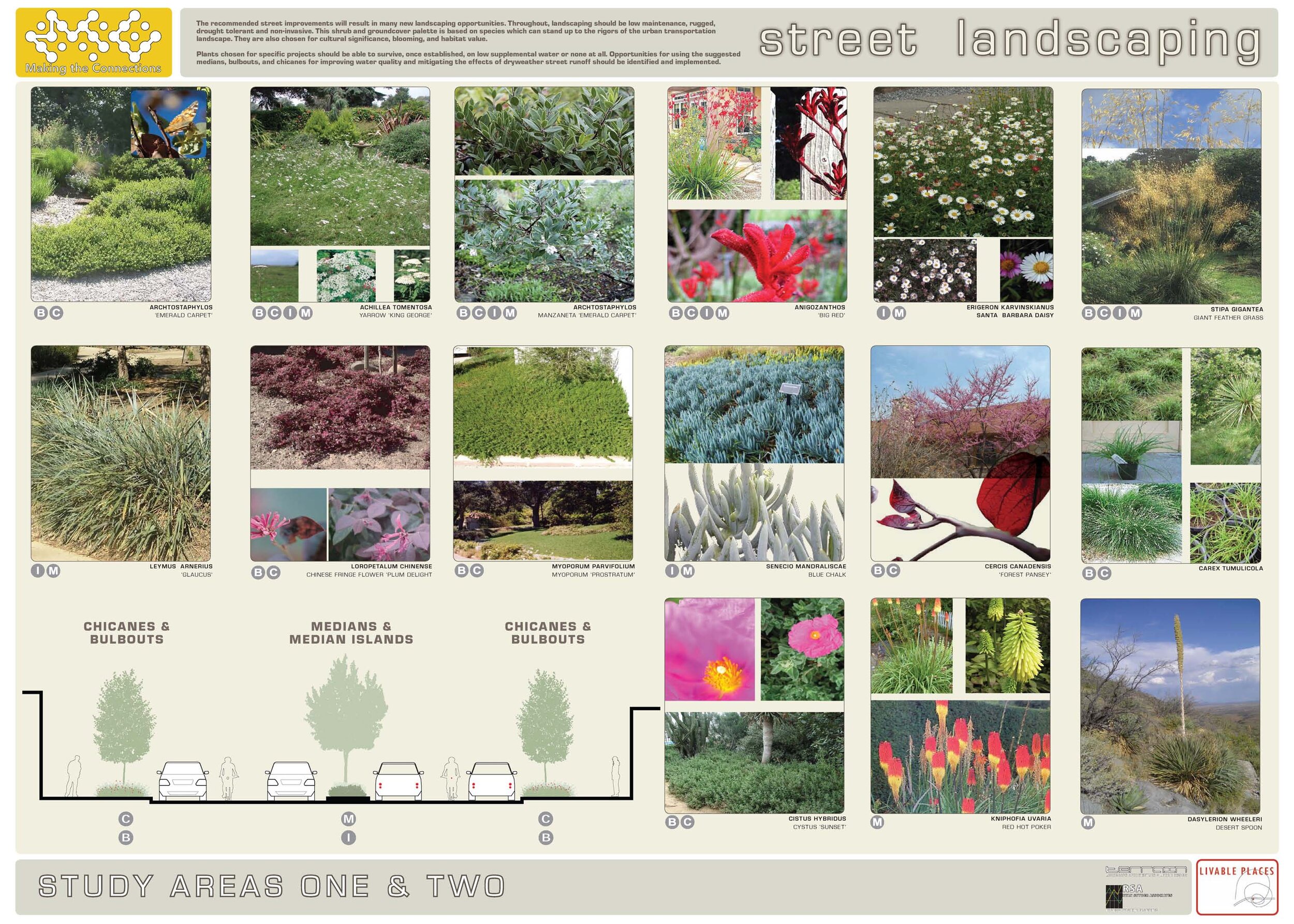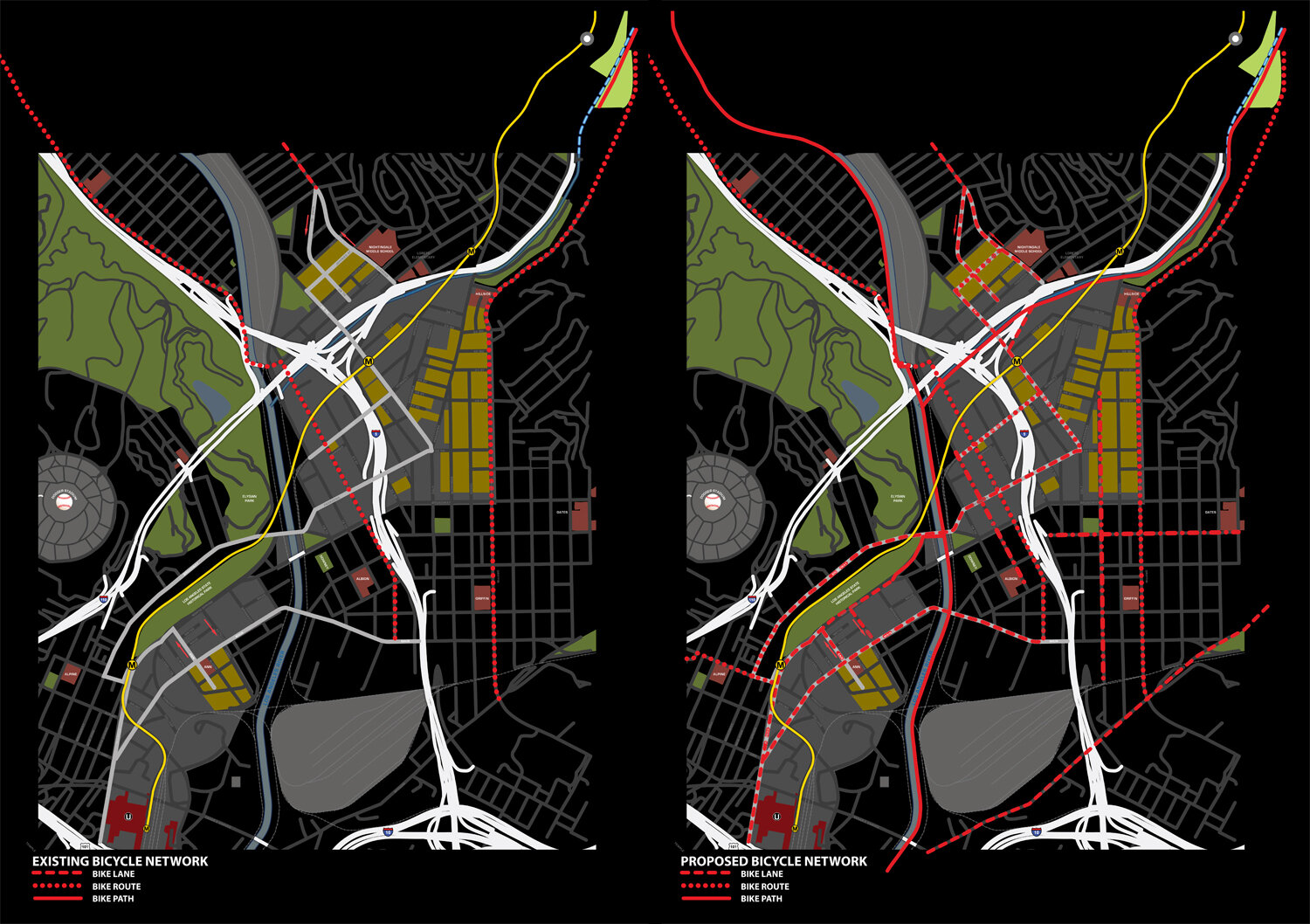
Safe Streets and Green Infrastructure
Walking and Biking are two of the most important ways we can travel today. In the face of climate change, congestion, public health problems, and other challenges, using our feet to get around is good for our well being and our planet. MAKING THE CONNECTIONS is an urban planning and design project that proposes ways to encourage walking and biking for two areas: the Lincoln/Cypress and the Ann Street neighborhoods. By improving and creating connections to the Lincoln/Cypress and Chinatown Gold Line stations, walking and biking that already occur in these neighborhoods will be safer and more convenient and encourage more walking and biking trips.
Click here to access and download Making the Connections Project Report.
MAKING THE CONNECTIONS, LOS ANGELES, CA
Neighborhood: the Lincoln/Cypress and the Ann Street
Date: 2008
Budget: $ 62,000
Client: Los Angeles Municipal Transit Authority
Staff: David Fletcher, Project Manager with Mia Lehrer + Associates
Role: Landscape Architecture/ Urban Planner
PROJECT SCOPE AND URBAN DESIGN RECOMMENDATIONS
green infrastructure typologies
plan overview
The two study areas for the project roughly encompass the ½ mile radius around each of the Gold Line stations. Study Area 1, Lincoln/Cypress Neighborhood, surrounds the Lincoln/Cypress Gold Line Station and is characterized by pockets of single-family homes and old industrial areas that increasingly include multi-family housing. Study Area 2, Ann Street Neighborhood, is to the east of the Chinatown Gold Line and includes William Mead Homes and old industrial areas with small pockets of housing. The vast majority of residents that live in the neighborhood live in William Mead Homes, which includes Ann Street and Ann Street Elementary School.
New Street Types
Key Connections
The goals of this project go beyond improvements for six key connections. Livable Places also worked to shape Making the Connections into a catalytic project that:
Fosters neighborhood-based project designs that enable more walking and biking for healthier communities
Encourages a jobs/housing balance that supports the efficient public transportation in core Los Angeles communities
Reducing dependency on single occupant vehicle trips, reduces traffic congestion, minimizes impacts on valuable habitat and improves air quality
Facilitates a more livable development model for the city of Los Angeles and the region
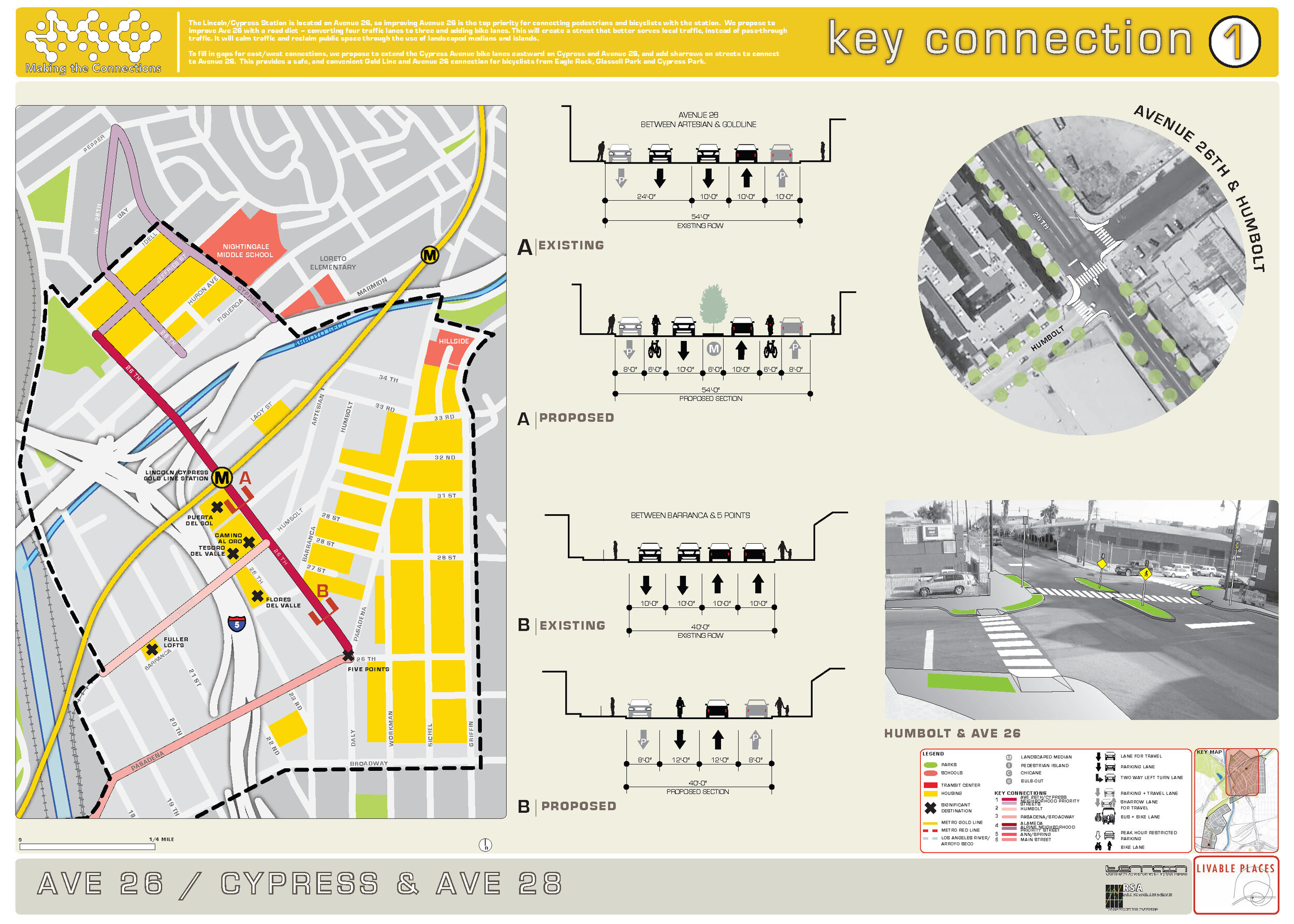

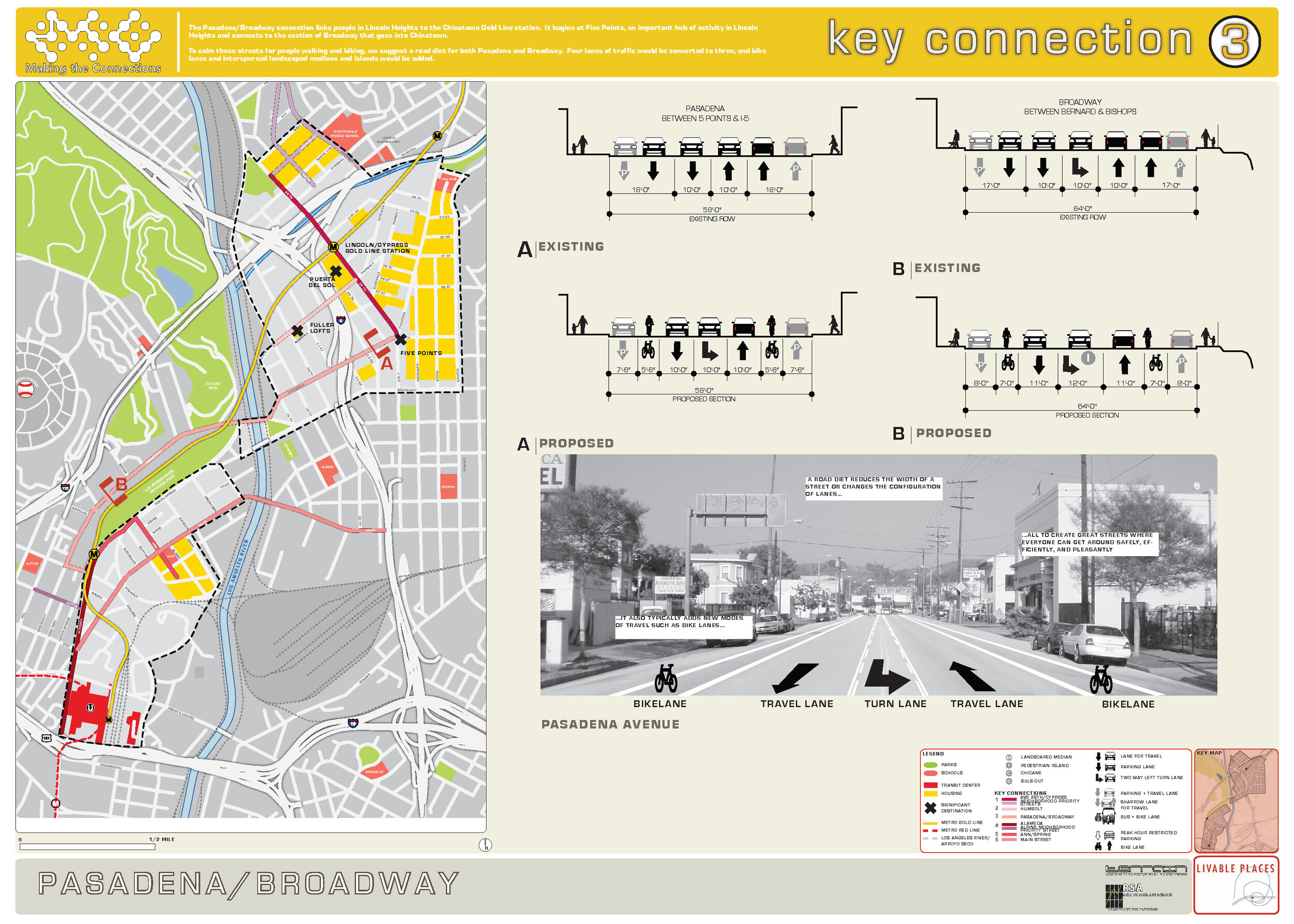
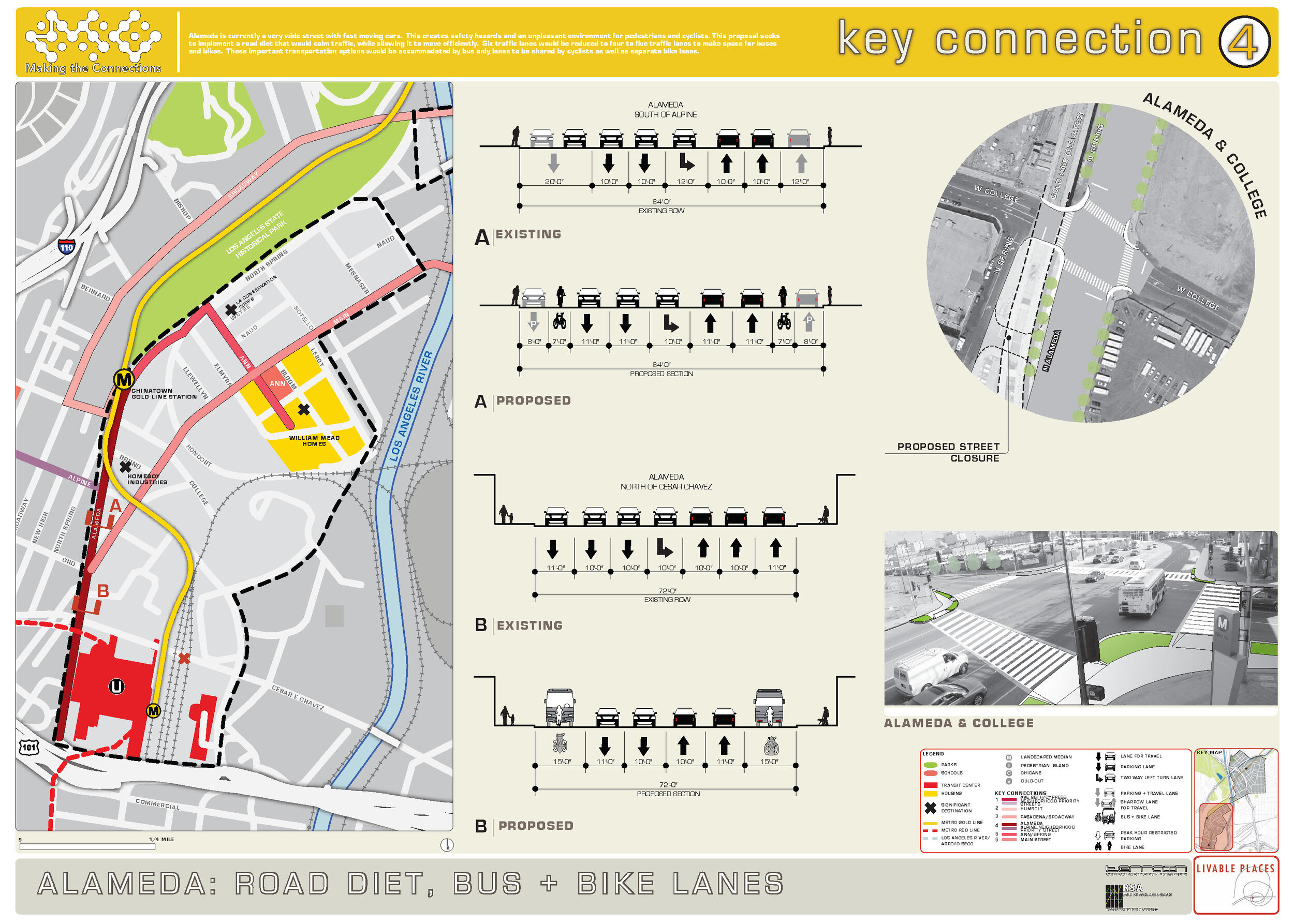

methodology and assumptions

